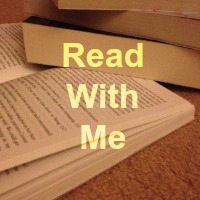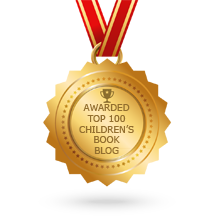Reflecting Realities
A recent Survey of Ethnic Representation within UK Children's Literature 2017 by the Centre for Literacy in Primary Education (CLPE) found that only 4% of the children's books published in 2017 features BAME (Black, Asian and Minority Ethnic) characters and only 1% had a BAME main character. This is a rather damning statistic. And it made me think...
Firstly I wanted to understand a bit more about the Reflecting Realities campaign launched by CLPE and look deeper into the statistics with the aid of a printout of the full survey and a handy highlighter.
The Centre for Literacy in Primary Education (CLPE) are an independent charity motivated to put "quality children's literature at the heart of all learning", supporting schools to teach literacy creatively and effectively and raise the achievements of children. They believe, as I do also, that being a reader opens the world to children and that literature should honour, value and reflect the reality in which they live. They maintain that they "still find it difficult to find enough books to add to [their] collections that are truly and authentically reflections of the wide world in which we live." This is something I will discuss shortly.
32% of pupils of compulsory school age in England were of minority ethnic origins in 2017 and yet only 4% of books published in the same year had a BAME character. Some other troubling information that this survey unveiled that only 1% of children's book published in 2017 starred a BAME main character. Something is certainly amiss. That doesn't make sense does it? Surely the books our children have access to should reflect the world around them? That's just logical. And surely we want all children to find themselves in a book? That's the magic of storytelling, right?
But it's not all doom and gloom because whilst these statistics are quite damning, there are lots of wonderful books out there that are, in my experience, easily accessible, which is why, whilst I wholeheartedly agree that the statistics unveiled by the CLPE is damning, I cannot agree with the statement: that they "still find it difficult to find enough books to add to [their] collections that are truly and authentically reflections of the wide world in which we live."
I dispute it because I have, without much thought other than curating a shelf of great stories, amassed a collection of books that does reflect the wide world in which we live. How do I know? Because I took every book off our active bookshelves* and counted them. Here's what I found:
 In short, our shelves are a pretty good reflection of reality. The CLPE research showed that 32% of pupils of school age in England were of minority ethnic origins, so showing 41% on our shelves is a fairly strong representation. And far above the 4% from the research. We have many books which feature an animal as the main character or are a word primer style of book where the pages feature predominantly animals, vehicles or objects, letters and numbers. And I think that makes sense for the age of the bairns. I should also point out that special mention goes to Sophy Henn's Ted character who we have six of the books and helps keep our shelves balanced alongside the Nosy Crow and National Trust collaborations, of which we have four books. I also noted that amongst the 'white only' books we have 19 fairytales/fairytale retellings featuring characters like Goldilocks and Little Red Riding Hood, which, as old European stories, it's perhaps not surprising that they have white characters. We also have seven 'classic storybooks' (books which are over 25 years old), such as We're Going on a Bear Hunt and Dogger, which sway the shelves a little.
In short, our shelves are a pretty good reflection of reality. The CLPE research showed that 32% of pupils of school age in England were of minority ethnic origins, so showing 41% on our shelves is a fairly strong representation. And far above the 4% from the research. We have many books which feature an animal as the main character or are a word primer style of book where the pages feature predominantly animals, vehicles or objects, letters and numbers. And I think that makes sense for the age of the bairns. I should also point out that special mention goes to Sophy Henn's Ted character who we have six of the books and helps keep our shelves balanced alongside the Nosy Crow and National Trust collaborations, of which we have four books. I also noted that amongst the 'white only' books we have 19 fairytales/fairytale retellings featuring characters like Goldilocks and Little Red Riding Hood, which, as old European stories, it's perhaps not surprising that they have white characters. We also have seven 'classic storybooks' (books which are over 25 years old), such as We're Going on a Bear Hunt and Dogger, which sway the shelves a little.
But, what this tells me is that there are many wonderful books featuring BAME characters and you can have them starring all across your shelves without a huge effort! And you don't have to sacrifice good storytelling for diverse shelves either. You might have to ask in your local bookshop but they will know exactly what to recommend. There are also some great social media accounts you can follow who strongly represent books with BAME characters, like Here Wee Read and The Conscious Kid (both accounts I love). I will always share BAME characters as I share other books, blending them into our book collection, alongside all the other books, creating an inclusive shelf.
All that said, it doesn't mean that the publishing industry doesn't still have work to do to improve the inclusiveness of children's books. The CLPE statistics show that there is still not fair representation in children's books. And that goes for representation of children with disabilities or additional needs too. This is something our shelves are woefully lacking but the books starring children with disabilities are often books about the disability rather than just great stories that happen to have a child in a wheelchair, or with a feeding tube, for example. But the only way for this to change is for us to demand them and to buy them. I also know that our book collection is constantly changing and as the children get older we will no doubt have more books with humans so I hope I will be able to maintain shelves that 'reflect reality'.
I hope you found this post interesting, and perhaps you feel inspired to have a look at your own shelves to see what they look like!
Thanks for reading,
Kim x
*By active bookshelves I'm referring to the ones that the children have access to - I have a box of seasonal books kept away in out attic and I have a box of books for BookBairn to grow into - books which I have received from publishers that BookBairn is still to young to enjoy but I've kept for future. So I stuck to the active, readily accessible books.


































The stats from the CLPE survey are certainly pretty sad but it’s nice to know that there are plenty books available with BAME characters and that BookBairn and the Wee Page Turner have so many in their collection.
ReplyDeleteThanks! We are lucky because we have so many books but I think it shows it is possible to have an inclusive shelf!
DeleteAfter reading your post I'm intrigued to see what percentage of BAME characters we have on our bookshelves. This was a really interesting read - thank you :)
ReplyDelete#ReadWithMe
Thanks Catherine - I imagine it would take you a while to count them all up as your shelves must be as packed, or more so, than ours!
DeleteI think the trouble for children as well is that a lot of them unfortunately can't afford books at home and similarly schools can't afford to replace the books the already have so they miss out on the diversity as they aren't given the opportunity to see more modernised books with these sorts of representations in :(
ReplyDeleteAbsolutely! And I think we should be trying to focus on that - I know our local library would love to have a greater selection of books as well as school libraries - there's just not enough funded. We are very lucky to be able to prioritise books in our house!
DeleteThose are really shocking statistics. While it's great that you have better representation in your personal collection, could it be that you've actively sought out those books? If so few books are published with BAME characters it must be hard for families who aren't fully up to date on the children's book scene to know where to look. It would be great for BAME characters to become run of the mill so parents don't have to study hunt them out. #ReadWithMe
ReplyDeleteI think you're right - we have sought them out. And we get sent new releases by publishers which helps. I think what I'm trying to say as if you seek out the books, you show publishers there's a demand. It's got to start with us to make it change.
DeleteThis is a really interesting read. Those statistics are pretty shocking. I must admit I can't think of a single book I have read with my daughter in recent years with a BAME main character, although there are a lot of BAME supporting characters in them. It's good to see that your own bookshelf more accurately reflects society than the statistics do!
ReplyDeleteI think it's easier when it's picture books as you can physically see the character and I hope that the increase in BAME characters in picture books will drip down into chapter books too!
Delete